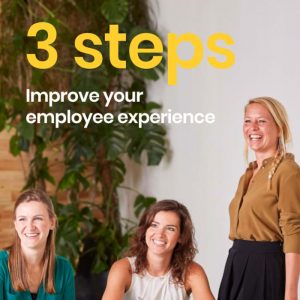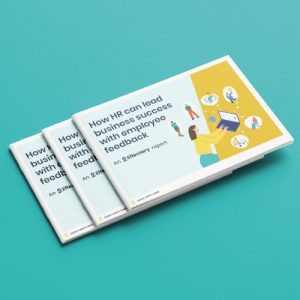As the retirement age rises and overall life expectancy increases, a more diverse workforce is emerging. While diversity has many benefits, creating a work environment for an age-diverse group also presents challenges. How can employers meet the needs of the different generations in the workplace? While answering this question, we distinguish between four different generations: Baby Boomers, Generation X, Millennials (Generation Y) and Generation Z.
From Boomers to Zoomers: managing different generations in the workplace

The needs or expectations of these groups are sometimes far apart. Of course, things also differ per person, but certain trends can be distinguished at a generational level, including topics such as career goals, leadership, new technology and ways of working. As an employee feedback and analysis specialist we’ve conducted research into the needs of the different generations.
Gen Z experiences the ‘work floor’ differently and wants training
Those in Gen Z (born between 1998-2004) were just about to start working in office environments, but due to the pandemic, things have turned out very differently. As a result of COVID-19, many people – mainly knowledge workers – from this generation have not or hardly ever worked with their colleagues in person on a regular basis. This makes their impression of what work is all about very different from previous generations, as they mostly work from home with online tools. This has made necessary (digital) work tools, accessibility, and a clear division of roles some of the strongest drivers of employee engagement of Gen Zers. To feel comfortable at work, this generation has a greater need than others for autonomy and role clarity compared to others. Additionally, Gen Z are more adaptive to change and are open to learning new skills and methods.
Employee experience in 3 easy steps
Learn the best ways to improve the employee experience in your organization with these 3 easy-to-follow tips! Get your copy today!
Download: employee experience tipsIn addition to these needs, there is also a great demand among Gen Z for training opportunities and courses to be provided by their employer. Almost one in five (19%) Gen Z employees are looking for another job because they are not satisfied with what their work has to offer in this area. This figure is much higher than for the other generations. For example, only one in ten (10%) of Gen X (born between 1968-1987) is looking for another job because of this reason. Do you want to keep the youngest generation on your shop floor? Make sure there are enough training opportunities available so that they grow and develop within your company. This makes them less likely to take the exit.
Millennials and Gen Z: big similarities
Millennials (born between 1988-1997) and Gen X currently form the largest group in the working world. These two generations have a lot in common when it comes to their needs at work. In particular, the feeling of being appreciated, being in line with the vision and objectives of the organization, and having the opportunity to do what they do best makes these employees happy. In addition, they value teamwork. Cooperation between team members and being able to express their opinions seem to be more important to these employees than to Gen Z. Another interesting finding is that these two generations score the highest when it comes to the needs of perhaps the two most crucial HR themes: engagement and productivity.
Free Whitepaper: Attracting and retaining talent – 5 tips
Learn the best ways to attract and retain talent to your organisation with these 5 easy-to-follow tips to retain employees!
DownloadSince Millennials and Gen X currently comprise the vast majority of the workforce, it is important to understand how to increase their loyalty. These employees are generally encouraged to stay if they are aligned with the organization’s goals and if they fit into the company culture. This is why it is important for employers to find out what type of culture and which values these generations most align with.
Baby boomers are looking for role clarity and autonomy
Baby boomers (born between 1956 and 1967) are a very distinct group in the workforce. These workers are usually in leadership positions and are preparing for retirement. Their main motivation is no longer the search for further career opportunities. Instead, they are driven by the vision of their current organization, when they are supported to learn new ways of working and are given the opportunity to do what they do best. In fact, they score highly when it comes to their needs for autonomy, alignment and role clarity. Meanwhile, they are not always happy about upcoming organizational changes.
Boomers tend to be very experienced and know how the organization works. Therefore, it is very important to create a working environment in which they can share their expertise with, for example, Gen Z, who, in turn, are asking for more training and opportunities to succeed. Boomers also attach great value to working atmosphere, meaning that they want their office environment to be welcoming and happy.
How to use employee listening to boost retention
Listening is key
Different generations and different people have different needs. The key takeaway from Effectory’s research is that employers must listen carefully to their employees to find out what their needs are in order to perform well, and this can be done by checking in with their employees regularly. It is better for your organization (and more cost-effective) to retain a good employee than to get a new one up to speed. Only by systematically asking and responding to the needs of your employees do you gain real insight into what is going on in their minds and how you can facilitate their wishes. Ultimately, this helps you as an employer to strengthen your employees’ commitment and keeps them engaged and retained.
How HR can lead business success
HR and employee listening are crucial to business success. Here is how employee insights can help your organization.
Download

